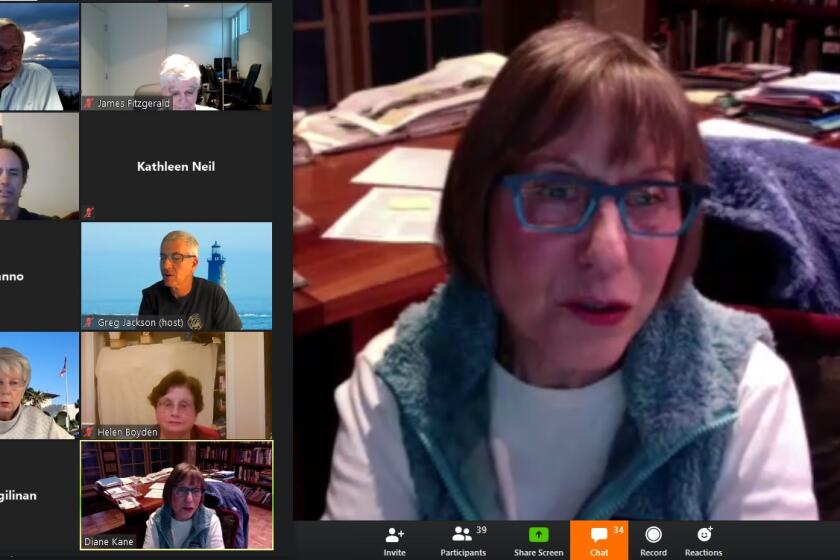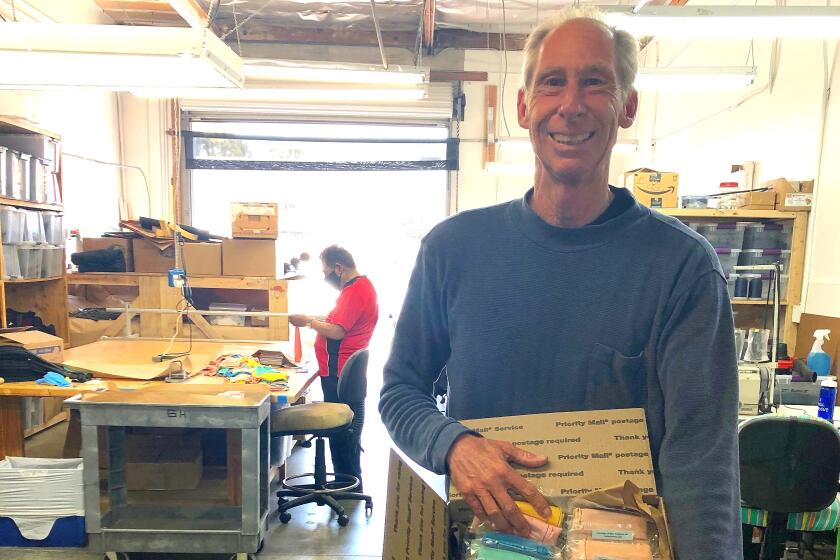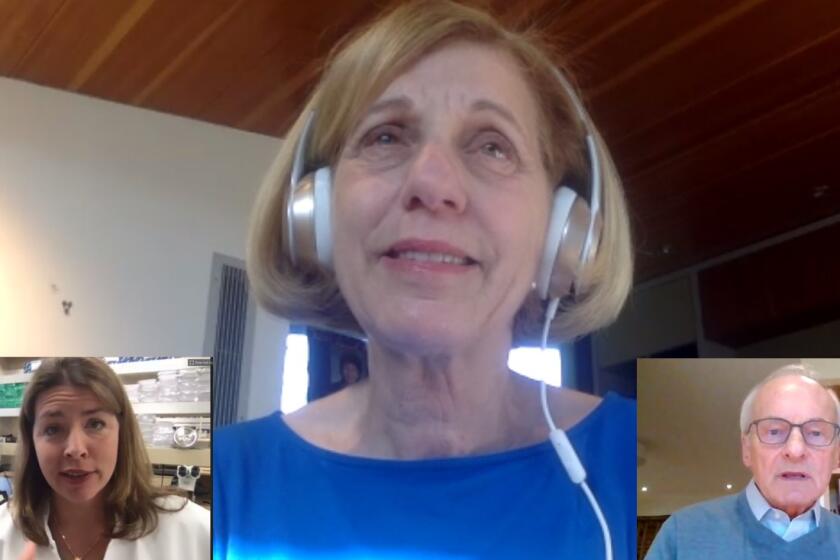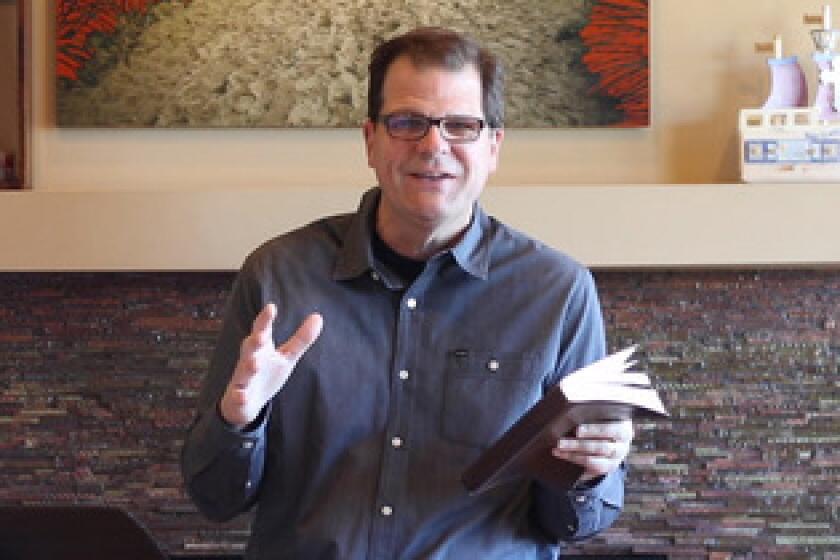Clocking cars on ‘Torrey Pines Freeway’ in La Jolla: Narrower lanes, mid-point stop, might slow speeders
Pottery Canyon homeowner Bill Allen recently contacted the Light to report motorists speeding down the hill at Torrey Pines Road at upward of 70 mph. The speed limit is 45 mph, although 40 is posted for the curves that constitute much of the stretch.
“I don’t even know how the people in those condos get out of the driveway without getting killed,” Allen said.
For more than a decade, committees have been rallying for project plans to slow traffic and improve pedestrian and bicycle access along Torrey Pines. The street’s more residential area to the west grabs most of the current attention and improvements — including a pedestrian-activated crosswalk signal currently under construction between Amalfi Street and Hillside Drive. However, the 1.3-mile downhill stretch from Glenbrook Way to Pottery Park Driveway has a history of speeding complaints.
Once the traffic light at Glenbrook turns green, it seems that many motorists vent their frustration with the snarled traffic on La Jolla Village Drive by gunning their accelerators down what some residents refer to as “the Torrey Pines Freeway.”
“Speed along this portion of road has always been high,” said San Diego police traffic officer Mark McCullough, explaining that “drivers accelerate down the hill and lose their sense of speed until they come back in housing and businesses.” A 2009 traffic survey conducted by the City found this road had 1.12 accidents per million vehicle miles, 3.73 times the rate for streets with the same classification.
Our own speed trap
The Light attempted to gauge the current severity of the problem. Lacking our own radar gun, we piggy-backed on the one inside the speed-indicator sign about 750 feet uphill from Pottery Park Driveway.
From 10 to 11 a.m. on Thursday, April 26, the speeds of 190 vehicles were recorded. The fastest was 59 mph. However, this was not accurate because faster speeds were not flashed by the sign. In fact, three cars whooshed by so fast, they resembled the Starship Enterprise in the opening credits to the original “Star Trek.” (An estimate of 80 mph for each of the three cars — which was conservative — was factored into our average. An employee of the City’s Transportation Engineering Operations Division, who asked not to be identified, guessed that the sign was calibrated to only display speeds up to 20 mph over the limit.)
Another issue we had: When the traffic light at Pottery Park Driveway turned red, for about two minutes every 12 minutes, motorists could see this about 100 feet uphill from the sign. Thus, many cars seemed to slow considerably before their previous downhill speeds could be measured. To compensate for this effect, we increased the total average speed by 5 mph.
The average traffic speed we came up with during our study was 52 mph, 7 miles over the speed limit and 17 miles over the 35 mph speed limit the cars were approaching. It’s not a scientific study, but we think it’s a decent approximation of reality.
“I drive that stretch myself and I observe it’s quite speedy,” agreed La Jolla Traffic & Transportation board chair Dave Abrams, adding that his board has received complaints — mostly about the noise from speeding motorcycles — but that the problem is “more of an enforcement issue.”
However, police officers don’t tend to use radar and/or pull speeders over on that stretch, McCullough said, “because the road is narrow and does not offer a lot of safe locations for officers to set their cars or motorcycles.” Officers would need to pace speeders and then pull them over at the bottom of the hill, which is rare.
“When we are able to get some enforcement in the area, it slows,” McCullough said. “But then, when we leave, the speed just goes back up. There is not a lot more than can be done at this time as the primary unit that goes out to do traffic and speed enforcement has gone from 55 officers to under 30 officers. They have added so much to their plate now as well has taken away the time they use to spend on traffic enforcement as well.
“Until we see an increase to our traffic unit, things will not get much better.”
Do speed indicators work?
The VCalm speed monitors were installed as a traffic-calming measure. However, no drivers observed seem to slow down after having their speed flashed at them — at least while the traffic light at Pottery Canyon Driveway was green. This calls the signs’ effectiveness into question.
“We have had some history with those on Soledad Mountain Road,” Abrams said. “There are a couple of signs there that, for several months, weren’t operational. The residents complained bitterly about that, seeming to think they were helpful. However, what typically happens is that, initially, when people see their speed flashing as 10 miles over the limit, they’ll slow down. But after a time, the regular users of that road seem to realize that there is no enforcement.”
A 2012 study by Baltimore’s Morgan State University seems to confirm both points. It concluded that speed indicators are an effective traffic-calming measure, yet “should be used as a temporary solution because their effectiveness reduces with time” and that “when a (speed indicator) is combined with another speed-control device, such as a speed camera, its effectiveness increases.”
Speed cameras are currently not legal in California, although legislative bills occasionally get introduced to try to change this.
Other solutions
Colin Parent, executive director of Circulate San Diego, a nonprofit group that advocates for traffic safety, is familiar with this downhill stretch. “Gravity is going to encourage more speed, so that’s all the more reasons to take measures to try and counteract that,” he said.
Parent offered several ideas, none of which was lowering the speed limit.
“Regardless of what a street’s posted speed limit is, drivers tend to drive as fast as the streets are designed to accommodate,” he said. “Enforcing or posting lower speed limits is often not sufficient to see actually reduced speeds, so the solution to a street like this is to design it better.”
Parent suggested an additional stoplight, or stop sign, midway down the mile-long stretch, where no other streets intersect with Torrey Pines Road. Another possibility, he said, is narrower lanes.
“It’s sort of counter-intuitive,” Parent said, “because people tend to think that wide lanes are safer, but when you have them, people tend to drive faster. If you go from a 12-foot lane to a 10-foot lane, it makes drivers feel more anxious and they tend to drive slower.”
Any proposed change would warrant a separate traffic survey to see what impact it might have, said City public information officer Anthony Santacroce. He added that a perpetual speed study is underway for the pedestrian crosswalk.
Although 52 mph doesn’t seem like an unreasonable speed in a 40-45 mph zone, Parent cautioned: “If one is hit by a car going 52 mph, there’s a strong likelihood that the person will die, and that 10 mph can matter a lot.”
Get the La Jolla Light weekly in your inbox
News, features and sports about La Jolla, every Thursday for free
You may occasionally receive promotional content from the La Jolla Light.




